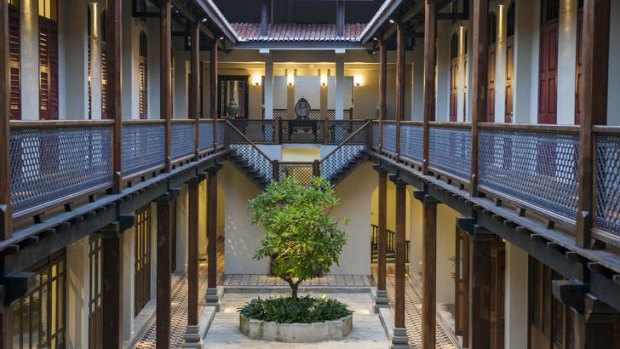
The courtyard at Seven Terraces.Credit: Leisa Tyler
Leisa Tyler visits George Town, Penang, where colonial heritage is the basis for cutting-edge design hotels.
The rickety and delightfully ramshackle British-era port of George Town, on the northern Malaysian island of Penang, has been in the midst of a renovation boom. Since receiving World Heritage accreditation in 2008 for its colonial-era architecture and artisan handicrafts and trades, it has become the latest darling of Asian heritage.
Colonial bungalows and Chinese terrace houses - perfectly adapted for the tropics with air vents and arched colonnades to shade shoppers from the midday sun and afternoon monsoonal downpours - are being converted into shops, galleries, cafes and hotels.
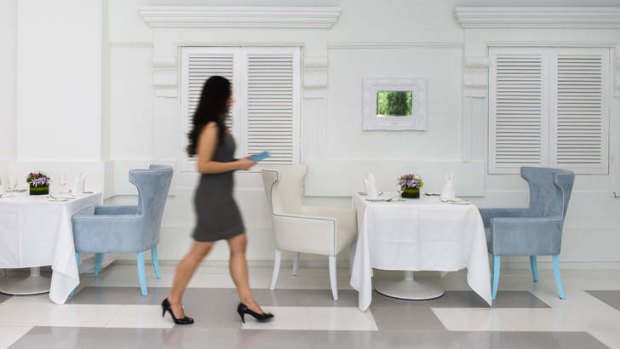
Macalister mansion.
George Town was founded in 1786 by Sir Francis Light, a merchant for the British East India Company, as a port for the lucrative tin-mining industry in nearby Ipoh.
By the late 1800s, it had grown into one of Asia's wealthiest and most cosmopolitan towns, with a melange of ethnicities and religions from across Asia among those who came here to find their fortunes.
A rent-control act, imposed by the British to protect rising inflation, continued well after Malaysia's independence in 1957, starved landowners of restoration money. But it also prevented the town's exquisite collection of colonial bungalows and Chinese shop-houses from being torn down. Now many are being transformed into small heritage hotels.
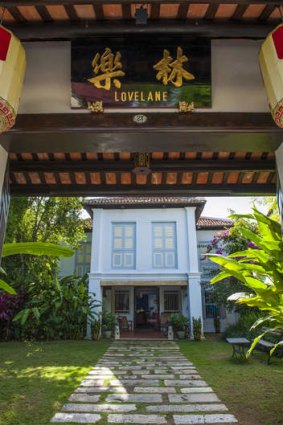
Hotel 23 Love Lane.Credit: Leisa Tyler
Here is our pick of the latest to open:
Traveller's openings
The most recent hotel project by Australian duo Karl Steinberg and Christopher Ong, who also did the Galle Fort Hotel in Sri Lanka and Clove Hall in Penang. It spans seven Straits Chinese terrace houses in the heart of George Town's heritage district, a stone's throw from the charming Goddess of Mercy Temple. The upmarket building, which was meticulously restored after it was partially destroyed by fire, has 14 guest rooms with local antique furniture and reproduction Chinese wedding beds, on which taller people may have to sleep sideways so their feet don't dangle off the end. Book a room with a balcony overlooking the art deco-style St George's Church.
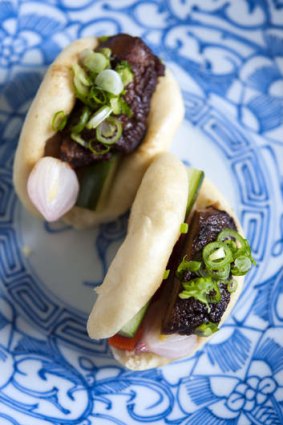
Pork buns at Seven Terraces.
The rooms, small pool, restaurant and reception area snuggle around an elongated granite courtyard centred by two old frangipani trees. The most exquisite antiques are in the shared spaces, including mother-of-pearl inlay rosewood chairs, marble table tops and an intricate carved wooden screen and door which belonged to the grandest house in George Town before it was torn down to make way for a shopping mall. The set was separated for 30 years before being purchased by Ong.
Travellers familiar with Ong and Steinberg's hotels might call Seven Terraces their piece de resistance. Unlike the duo's other hotels, which are known for their respect of local customs with lax barefoot dress codes, this one keeps quite a formal air.
Don't miss dinner at the Kebaya Dining Room. The street-side restaurant has a collection of antique Willow pottery and showcases the festival-inspired Nonya cuisine that the Penang-born Ong grew up with. Order the five-spice duck, a confit teamed with caramelised spiced plums and oranges with cinnamon, cloves, star anise and nutmeg. Also try the ayam kapitan - a chicken curry and perhaps the most famous of all Straits Chinese dishes. The chicken is grilled before being topped with a sauce made from fresh lemongrass, coriander and galangal.
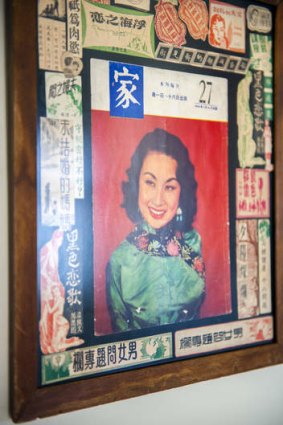
A vintage poster at Noordin Mews.Credit: Leisa Tyler
Double rooms from 550 ringgit ($169), including breakfast.
23 Love Lane
An old wooden mansion set back from the road and inside the heritage district, 23 Love Lane takes its name from the street's promiscuous past as George Town's red-light district. Built over several different epochs, the house contains a variety of architectural styles, with an elaborate Chinese gate, a main Anglo-Indian wooden bungalow and various outbuildings and attachments. Little is known about the main house, other than that it first appeared on maps in 1891 and until its current transformation, which began a few years ago, it was known as the Oasis Hotel.
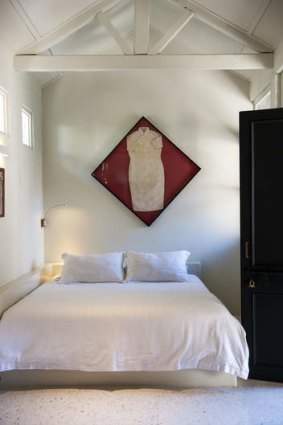
Noordin Mews.Credit: Leisa Tyler
The 10 guest rooms are slotted into the main building and annexes. Each is furnished with colourful Armenian kilims and 1950s furniture pieces collected from Penang; the Indian duplex has a king-size bed downstairs, two singles upstairs, two bathrooms and paintings of rickshaw drivers and other subjects innate to the subcontinent. The Jack's Room annex has two rooms off a central reading area and lots of natural light. My favourite is the Garden Room, a cute-as-a-button double room with a private entrance opening to a lawn and lush foliage, China-red furniture and an open-air tub and rain shower. Note that it is an old wooden house and upstairs rooms screech and creak, so if you are sensitive to noise, book a ground-floor room with clay tile floors.
There is a small cafe serving roti canai - flaky Indian flatbread with curry; and nasi lemak - coconut rice with condiments, for breakfast. The dinner menu only has one dish: Steak and fries, tender 150-gram prime Aussie grass-fed beef topped with a glob of Cafe de Paris butter and a generous helping of fries and salad for 45 ringgit.
Double rooms are from 500 ringgit, including breakfast. See 23lovelane.com.
Macalister Mansion
This grand 100-year-old mansion on Macalister Road, a 20-minute walk from George Town's heritage district, has been given the facelift of the century. Gutted and redesigned by Singapore-based Ministry of Design (which also did the New Majestic Hotel in Singapore), it is now Penang's, if not Malaysia's, slickest address.
Named after former Penang governor, Colonel Norman Macalister, the design plays on colonial themes with references to the Scottish colonel and his cohorts in various art installations throughout, including a large bust of the governor in the driveway. The eight upstairs rooms are among the most luxurious in Penang with pale oak floors, bespoke designer furniture, deep tubs in glitzy crazy-tile bathrooms, plush gowns, fine linen, espresso machines and free non-alcoholic mini bars.
Staff are chirpy and attentive, but Macalister Mansion is primarily a lifestyle venue. With only eight rooms versus five food-and-beverage outlets, the hotel side appears to be an afterthought. Most of the guest rooms are affected by music resonating from the smoky late-night disco, Bagan, downstairs (light sleepers would be wise to book rooms 1 and 3, which are located on the other side of the mansion).
The Dining Room, which serves modern French with Japanese leanings in an all-white ground floor room centred by a blue and a pink deer, is fun and perky with top-notch service and a comprehensive wine list.
Dishes such as pan-fried miso cod with shimeji and watercress coulis and grilled Hokkaido scallop are pleasant, but more work seems to have gone into the presentation of the meals rather than the flavour combinations. A better dining option is the Den, a moody space with black leather couches and sparkly tiles overseen by whisky aficionado Natasha Capol, who serves single cask drops from some of Scotland's premier distillers.
Double rooms are from 957 ringgit, including breakfast. See macalistermansion.com.
Noordin Mews
This 16-room hotel, converted out of stables and an early 20th century Straits Chinese terrace house, was the third Penang hotel created by Steinberg and Ong (the pair sold it to Singaporeans in 2012).
A cosy palette of ash grey and neutral whites, Noordin Mews stands in contrast to this scruffy part of town where rumble-tumble terrace houses are occupied by printing houses, car-repair shops and small family businesses.
The neighbourhood and its authenticity are half the charm, coupled with the best price-to-comfort ratio of any George Town hotel.
Designed in "Chinese Hollywood" style, the sexy glamour of 1930s Shanghai, the 14 guest rooms in the old stables, each spread over 30 square metres.
The rooms have king-size beds, separate day beds, antique terrazzo floor tiles and delightful art deco touches, including vintage wooden chairs and knick-knacks from the 1950s, including bottles of Florida Water, mother-of-pearl mirror compacts and tins of Imperial Leather talcum powder.
The two rooms in the terrace house hold an old-world antique feel, with four-post beds and original wooden floorboards.
There is a small cafe serving comfort food, such as bacon sandwiches and pasta, at night and local delicacies such as char siu bao - steamed Cantonese buns filled with barbecue pork - and dim sum for breakfast.
Best of all is the 12-metre long swimming (plunge) pool in the central courtyard, a rare but very welcome addition to heritage hotels with this price tag in George Town.
Double rooms from 275 ringgit, including breakfast. See noordinmews.com.
Singapore Airlines flies to Penang from Sydney and Melbourne for about $1335 return, including taxes. Flights are to Singapore (about 8hr) and then to Penang (1hr 25min with SilkAir); see singaporeair.com.
Sign up for the Traveller Deals newsletter
Get exclusive travel deals delivered straight to your inbox. Sign up now.